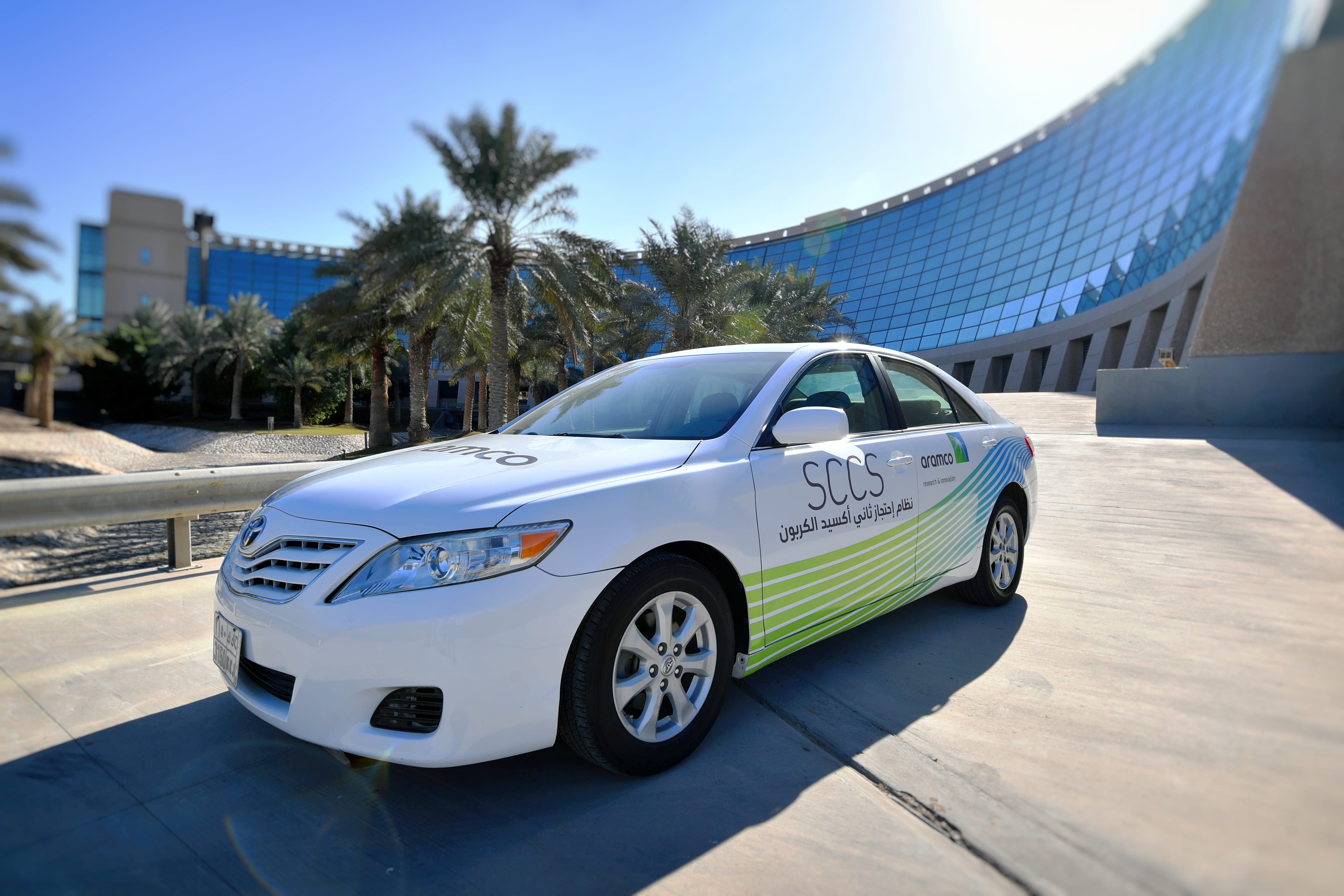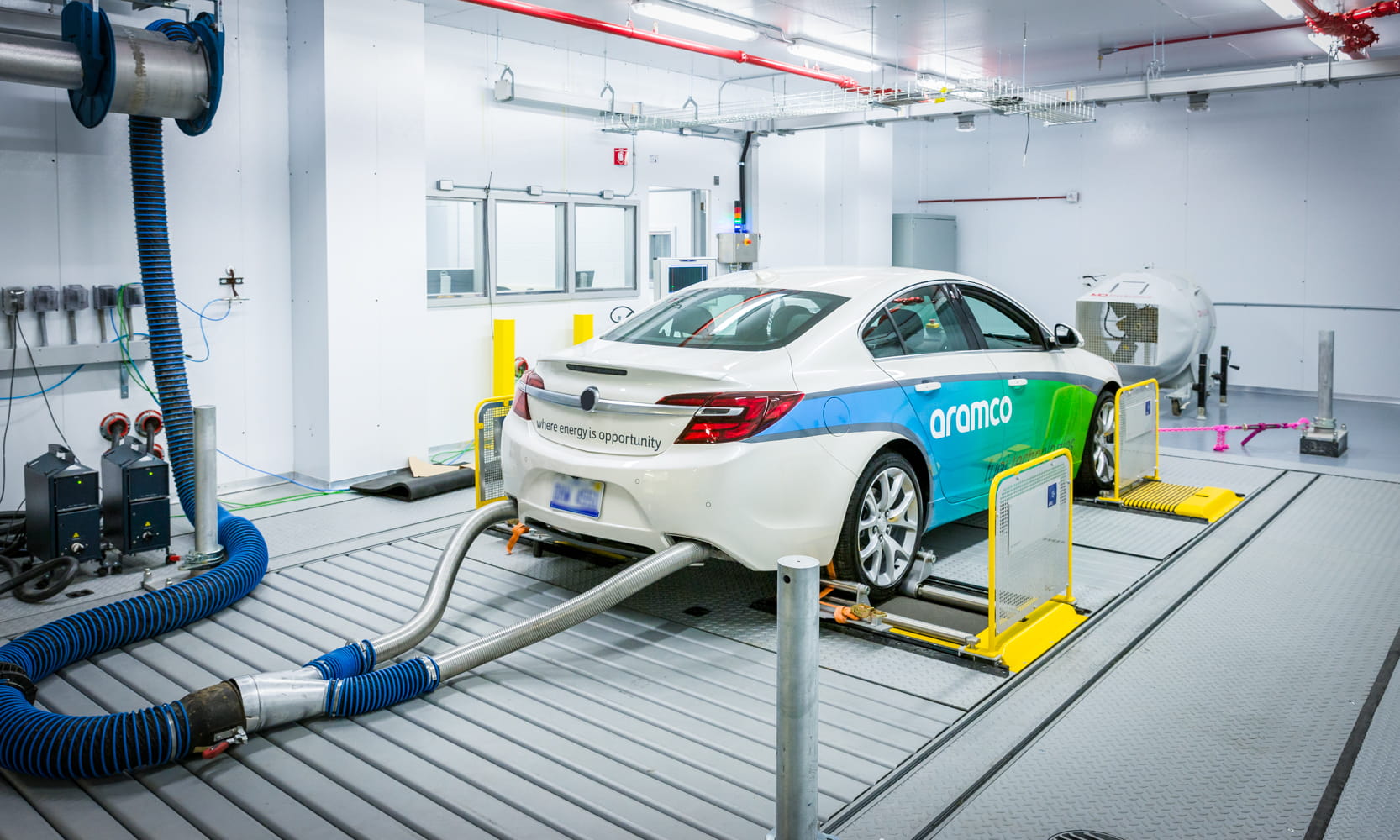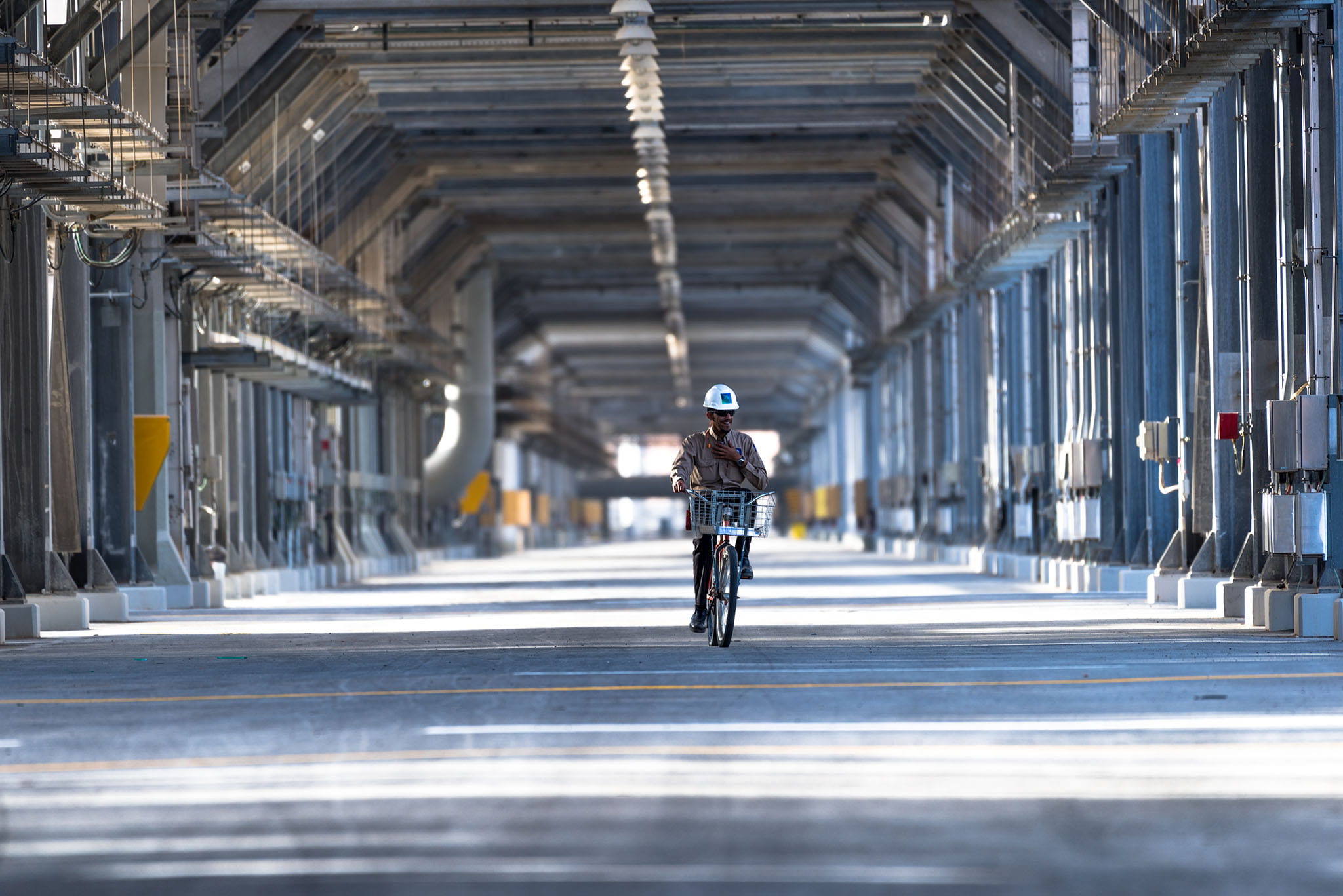
Reducing emissions from transport
Mobile Carbon Capture (MCC) is an innovative Aramco technology that aims to lower the CO2 footprint of the transport sector.
Refined over 14 years by our scientists, the latest variant of MCC technology can capture up to 40% of the CO2 emitted from a vehicle’s exhaust. The CO2 is stored on-board the vehicle, and once offloaded can be used in a variety of industrial and commercial products.
Some estimates predict that there could be as many as 1.7 billion vehicles still using internal combustion engines in 2040. This clearly poses huge challenges for both our natural resources and the environment — particularly in terms of carbon dioxide (CO2) emissions and impending targets on carbon neutrality.
MCC has the potential to significantly reduce freight transport emissions, and would be especially viable when applied to captive fleets.
In partnering with the automotive industry, we can help cut the development timelines associated with deploying new engine technologies and get more-efficient engines on the road faster.

Learn more about MCC

Engine technologies
We’re approaching the emissions challenge in an entirely new way: by making internal combustion engines (ICEs) — and the fuels that power them — produce lower levels of emissions while still delivering high efficiencies.

Climate Change & Energy Transition
For some, the idea of an integrated energy and chemicals company positively contributing to the climate challenge is a contradiction.